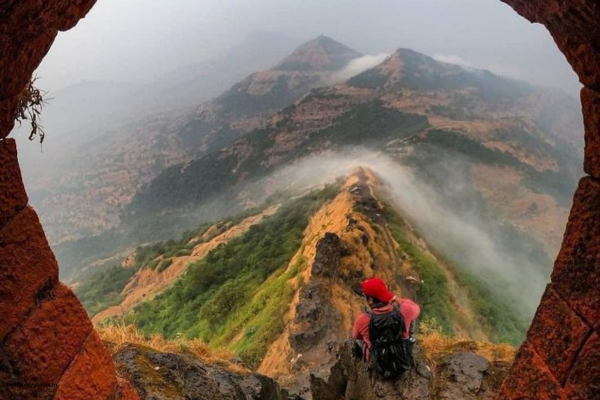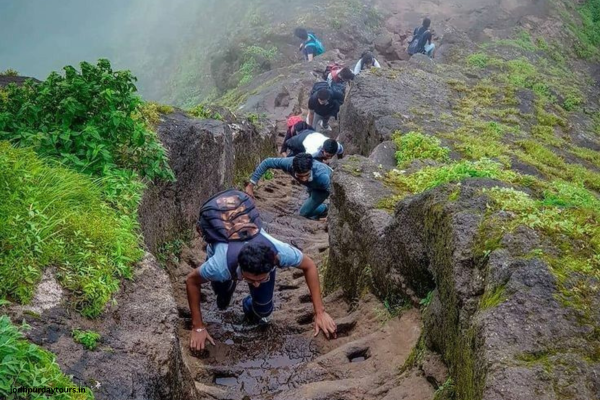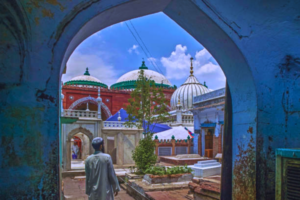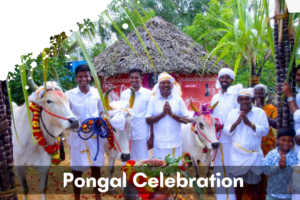history
The history of exploring Harihar Fort dates back centuries, with the exact origins somewhat shrouded in the mists of time. However, like many forts in Maharashtra, it has passed through the hands of several dynasties and rulers.
One of the earliest mentions of exploring Harihar Fort is believed to be from the Yadava dynasty, which ruled the region in the 9th century. It’s likely that the fort was built or fortified during this period to serve as a strategic stronghold.
Subsequently, the fort came under the control of the Bahmani Sultanate in the 14th century, followed by the Mughals and later the Marathas. Each of these powers likely made modifications to the fortifications and used it for military purposes.
The fort’s location made it strategically important, as it provided commanding views of the surrounding landscape, making it easier to monitor and defend the region.
Today, exploring Harihar Fort stands as a testament to the region’s rich history and architectural heritage, attracting adventurers and history buffs alike to explore its rugged beauty and storied past

Harihar Fort History and Trek references -
For more detailed information on the exploring Harihar Fort, you might want to explore various sources such as:
Historical books on the forts and history of Maharashtra, which often provide detailed accounts of exlporing Harihar Fort. Some examples include:
- “Forts of Maharashtra: A Guidebook” by Ajit M. Bhagat
- “Maratha Empire” by K.K. Nair
Online resources such as:
Archaeological Survey of India (ASI) website, which may have documents or reports related to Harihar Fort.
Academic journals or articles focusing on the history and archaeology of Maharashtra, which might discuss the fort in detail.
Local historical societies or organizations in Maharashtra, which may have conducted research or published materials on the forts in the region.
By consulting multiple sources, you can gain a comprehensive understanding of Harihar Fort’s history and its significance in the context of Maharashtra’s heritage
features
exploring Harihar Fort , also known as Harshagad, boasts several notable features:
Rock-cut Steps: One of the most distinctive features of Harihar Fort History and Trek is its rock-cut steps carved into the steep hillside. These steps are quite narrow and steep, making the ascent to the fort challenging and adventurous.
Bastions and Ramparts: The fort is fortified with bastions and ramparts, typical of forts built for defensive purposes. These structures were strategically placed to provide vantage points for monitoring and defending against intruders.
Hanuman Temple: At the top of the fort, there is a small temple dedicated to Lord Hanuman. This temple holds religious significance for visitors and adds to the cultural heritage of the fort.
Water Cisterns: Like many forts in Maharashtra, Harihar Fort features water cisterns or tanks that were constructed to store rainwater for the fort’s occupants during times of siege or scarcity.
Commanding Views: Due to its elevated location, Harihar Fort offers breathtaking panoramic views of the surrounding landscape. Visitors can enjoy sweeping vistas of the hills, valleys, and plains below, making the trek to the top a rewarding experience.
Architectural Elements: While much of the fort’s original structures may have deteriorated over time, visitors can still see remnants of architectural elements such as doorways, bastions, and walls, which provide insight into the fort’s construction and design.
Challenging Trekking Routes: The trekking route to Harihar Fort is known for its adventure and thrill. The combination of steep rock-cut steps, narrow pathways, and stunning scenery makes it a popular destination for trekkers seeking both physical challenge and natural beauty.
These features collectively contribute to the allure and charm of Harihar Fort, attracting adventurers, history enthusiasts, and spiritual seekers alike to explore its rugged terrain and storied past.
Architectural Design
The architectural design of exlporing Harihar Fort reflects the ingenuity and engineering prowess of its builders, who constructed the fort atop a steep hillside for strategic advantage. While the fort may not exhibit elaborate palatial structures like some other forts in India, its design is notable for several key features:
Strategic Location: Harihar Fort is strategically situated atop a triangular prism-shaped rock massif, rising sharply from the surrounding plains. This natural formation provided a strong defensive position, making it difficult for enemies to approach the fort without detection.
Rock-Cut Steps: One of the most distinctive architectural elements of Harihar Fort is its rock-cut steps, which were carved directly into the steep rock face of the hill. These steps wind their way up the hillside in a series of switchbacks, providing access to the fortification at the summit. The design of these steps demonstrates the resourcefulness of the fort’s builders in utilizing the natural terrain to create a pathway to the fort.
Bastions and Ramparts: The fort is fortified with bastions and ramparts constructed along the perimeter of the hill. These defensive structures were strategically positioned to provide cover for defenders and to repel potential attackers. The bastions offer commanding views of the surrounding landscape, allowing defenders to monitor enemy movements from a distance.
Water Management: Like many forts in Maharashtra, Harihar Fort includes water cisterns and tanks designed to collect and store rainwater for use during times of siege or scarcity. These water management systems were essential for sustaining the fort’s occupants during extended periods of conflict or isolation.
Simple Living Quarters: The residential structures within Harihar Fort are relatively simple in design, consisting of basic rooms and chambers constructed from local materials. While the fort may not have housed royalty or nobility, it provided a functional living space for soldiers and other personnel stationed at the fort.
Overall, the architectural design of Harihar Fort reflects a combination of natural and man-made elements, with an emphasis on practicality, defense, and utilization of the surrounding terrain. Despite its relatively modest size and construction, the fort remains an enduring symbol of Maharashtra’s rich architectural and historical heritage

Near by place to visit
If you’re visiting Harihar Fort and looking for nearby places to explore, here are some options:
Trimabkeshwar Temple:-Located in the town of Trimbak, about 45 kilometers from Harihar Fort, this temple is dedicated to Lord Shiva and is one of the twelve Jyotirlingas, sacred abodes of Shiva in India. The temple is situated at the source of the Godavari River and is surrounded by lush greenery, offering a serene and spiritual atmosphere.
Anjaneri Fort:- Anjaneri Fort, believed to be the birthplace of Lord Hanuman, is situated near Harihar Fort. It offers another trekking opportunity for adventure enthusiasts. The fort provides panoramic views of the surrounding mountains and valleys.
Brahmagiri Hills:- Brahmagiri Hills, located near Trimbak, offer scenic beauty and opportunities for trekking and nature walks. The hills are part of the Western Ghats range and are known for their rich biodiversity, making them ideal for nature lovers and wildlife enthusiasts.
Trimbak Wildlife Sanctuary:- This sanctuary is situated near Trimbak and is home to a variety of flora and fauna, including species like leopards, sloth bears, and various species of birds. It’s a great place for wildlife spotting and nature photography.
Nashik City:- Nashik is a bustling city located near Harihar Fort, known for its religious significance, especially during the Kumbh Mela festival. Visitors can explore temples, markets, and vineyards in and around Nashik.
Gargoti Museum:- Located in Sinnar, Gargoti Museum is a unique museum showcasing a stunning collection of rare and exquisite mineral specimens. It’s a fascinating place for those interested in geology and gemstones.
These are just a few options for places to visit near Harihar Fort. Each offers its own unique attractions and experiences, ranging from spirituality and nature to history and culture.
Trekking to Harihar Fort is an adventurous and exhilarating experience, attracting thrill-seekers and nature enthusiasts alike. Here’s a basic guide to explore the trek to Harihar Fort:
Starting Point:- The trek usually begins from the base village of Nirgudpada, which is the closest village to Harihar Fort. Nirgudpada is accessible by road, and you can reach there by private vehicle or public transport.
Trek Route:- From Nirgudpada, the trekking trail leads through scenic countryside and gradually ascends towards the base of the fort. The initial part of the trek is relatively easy, with well-defined pathways passing through fields and small settlements.
Rock-Cut Steps:- As you approach the base of Harihar Fort, you’ll encounter the iconic rock-cut steps that lead to the fort’s entrance. These steps are steep and narrow, carved directly into the rock face of the hill. Climbing these steps requires caution and careful footing, especially during monsoon or wet conditions.
Climbing the Fort:- Once you ascend the rock-cut steps, you’ll reach the top of the fort where you can explore the ruins and take in panoramic views of the surrounding landscape. Be sure to explore the various structures and vantage points atop the fort, including bastions, water cisterns, and the Hanuman Temple.
Return Journey:- After enjoying the views and exploring Harihar Fort, you can descend along the same route back to Nirgudpada. Take your time and be cautious while descending the rock-cut steps, as they can be slippery, especially during the descent.
Safety Precautions:- It’s essential to take necessary safety precautions while trekking to Harihar Fort. Wear sturdy trekking shoes, carry sufficient water and snacks, and be prepared for variable weather conditions. During the monsoon season, the trekking trail can be muddy and slippery, so proceed with caution.
Guided Treks:- If you’re unfamiliar with the terrain or prefer assistance, you can opt for guided treks organized by local trekking groups or tour operators. They can provide experienced guides who are familiar with the trekking route and can ensure a safe and enjoyable trekking experience.
Overall, trekking to Harihar Fort offers a thrilling adventure amidst stunning natural beauty and historical significance. Whether you’re a seasoned trekker or a beginner, it’s an experience that’s sure to leave a lasting impression.
The best season to visit Harihar Fort is typically during the post-monsoon months of October to February. Here’s why:
Weather:- During the post-monsoon season, the weather is usually mild and pleasant, with cooler temperatures compared to the scorching heat of summer. This makes trekking more comfortable and enjoyable.
Scenic Beauty:- After the monsoon rains, the surrounding landscape is lush and green, offering breathtaking views along the trekking route. The waterfalls are also rejuvenated during this time, adding to the scenic beauty of the trek.
Clear Trails:- The trails leading to Harihar Fort are usually less muddy and slippery during the post-monsoon months, reducing the risk of accidents or injuries along the route. This makes trekking safer and more enjoyable for visitors.
Optimal Visibility:- Clear skies during the post-monsoon season provide excellent visibility, allowing trekkers to enjoy panoramic views of the surrounding hills and valleys from the summit of Harihar Fort. This enhances the overall trekking experience and makes it more rewarding for visitors.
While the post-monsoon season is generally considered the best time to visit Harihar Fort, it’s essential to check the weather forecast before planning your trip and to be prepared for sudden changes in weather, especially during the winter months when temperatures can drop significantly, particularly at night. Additionally, carrying sufficient water, snacks, and appropriate trekking gear is advisable for a safe and enjoyable trekking experience.




